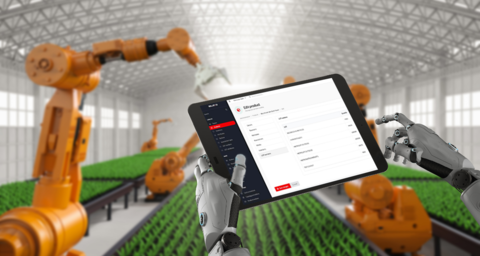It has been put-on-your-gloves scrap time for so many businesses in so many sectors. The COVID-19 pandemic has forced an urgent soul-searching re-examination of how to connect with customers, how to deliver our products and services to customers, and also who our customers are now, and what, exactly we are even offering to them.
A business model re-think is primarily focused on digital technologies, that's not much of a surprise. What it is not, however, is about getting a new website when it comes to successful model pivots.
Wait. What's wrong with getting a new website?
Assess your customers
This will take very different forms for most sectors, but almost universally customers, members, patients, stakeholders, and partners are going to see who they need in their lives differently. Physically there may be caution, financially there may be scarcity, emotionally there could be tension. Why do they need you now? Where do they need you now?
Setting up or beefing up digital delivery models needs to start with answering this first. This begins without a single byte of digital consideration. Seriously. Draw it out on pieces of paper if you have to, you need to create a vision of your customer base and potential future changes to your customer base by their persona and personal and economic frame of mind.
Connect with your customers
Whether you were 100% physical, or 100% digital, your customers' lives are different now. They feel differently about something as simple as getting groceries, they're likely going to feel differently about why they would buy from you - that's neither good nor bad, it just is.
What could you do to serve them that would delight and help them that reshapes the physical interactions you may have had before? Even if it doesn't replace your physical delivery model entirely, reconsider everything about how they even interact with your staff, products, and support to determine how you will help them. Is it a conversation? Tutorial? Product recommendation? Product review and demonstration? Your customers want to feel your attention, just differently.
Assess your team
Your staff need you too. Not just for money, they want to feel that you have a plan that moves forward both for business as well as their lives. How will they get work done now? How can they be productive for the business? And how can they stay safe in the process?
They want to feel that you've got their backs as much as you can, and ideally, if you can show that you're building a next-generation plan for them to have all of the above and find a way for them to contribute and thrive, you've got something.
More than likely you need to audit your acquisition flow. Your business lifeblood goes nowhere without this. You need to consider how your customer persona (assess your customers) has changed, what's motivating them in day-to-day life and what they need to run their lives that has changed. Just running out to the store is, for some, a problematic task.
Connect with your staff
How can you make your staff feel as safe and empowered as possible? While remote teams have become part of the new normal, it is by no means universal, and it is definitely more complex than sending a laptop home with a sales rep expecting that a laptop just replaces work interaction simply because it has email and a few admin systems accessible on it.
Your pivot must take into consideration your work culture. Not everyone responds to remote work environments the same way. You will likely find differences in how your staff self-motivate and find room in their homes to work efficiently. Your digital tools will impact this as well; not all people can abstract out the feeling of connectivity through a screen and phone.
Product Pivot Prioritization
For some leaders this can require a little more self-examination. Does your value proposition hold up now? Do your customers still care about buying from you specifically, or can they, themselves, pivot to buying the same, or similar product or service from someone else? Is a remote, digital delivery model allowing someone else to swoop into your customer paddock and grab their shifting attention away from you? Could you be the one swooping in to take market share from other areas? Could this be an opportunity for you?
Your products and services need to feel just as real to your customers. Real to view and assess, real to imagine, real to interact with and order. How easy can you make this now for them to experience? Consider repackaging your offerings in a way that simplifies the buying experience. If buying from you before, required configuration, customization, or onboarding by your team, could you pre-package some configurations to be good-to-go right off the bat? Consider reproducing the configuration process in an interactive tool, or even real-time customer interaction process online. Tools as simple as quote-interactivity through chat plus customer service collaborative cart-building has become a significant boost to customer attention.
Reframe financial loyalty relationship
Instead of going straight to the D-word discounting consider other mechanisms to provide more and longer lasting value to customers. If price breaks, volume buying, and brand loyalty clubs are options, look at automating loyalty systems across your platforms to show customers their own account value savings rather than just throwing sales percentages into the wind.
Reframe channels
More than likely you need to audit your acquisition flow. Here is where all bets are off, it's scrap time. Your business lifeblood goes nowhere without this. You need to consider how your customer persona (Assess your customers) has changed, what's motivating them in day-to-day life and what they need to run their lives that has changed. Just running out to the store is, for some, a problematic task. For health reasons, household management, work-life logistics, fear, people of all stripes have reframed their daily routines, and then done it again as things continue to evolve.
Are your channels going digital, all or in part? If yes, where and how? Are they global? Could moving into new channels be a cost effective leverage to your traditional offerings. Could 3rd party marketplaces be a secondary outlet?
Automation in acquisition
Can you automate these channels? Remember one of your goals is to ensure staff safety -- that likely means limiting physical interaction at least to some degree. By automating much of your acquisition process -- planned campaigns, integrated inventory, campaign triggers, automated customer messaging journeys, customer buying pattern triggers, B2B versus B2C buyer experience -- you are taking steps to protect your staff while still putting them to higher value work, leveraging their efforts to greater ROI.
So what's wrong with a new website?
Nothing of course. A new website, ecommerce site, they're all probably fine, hopefully they look good, operate well enough. But if you have not worked through your model, its pivot, its offering, your acquisition, and channels, all you have is a slightly shinier version of what you've always had. You know what doing the same thing over and over gets you.
The evidence is already in: we measured businesses that had been actively building channel strategies, B2B and B2C customer experience-specific channels, buyer configuration interactive tools, and the list goes on. Suffice it to say some businesses have been on digital transformation for years. They have never seen their digital business as "a website", they are digital extensions of their workflow, culture, and value proposition -- it's fully baked into their identity. When 2020 went sideways, they were hurt just like everyone, but they knew what to do next because they had models already in place, ready to tweak, channel strategies they would rework immediately because they already knew how, customer acquisition models that could be extended and tested again and again. They had the pieces already in their DNA. It was never about a new website.


























